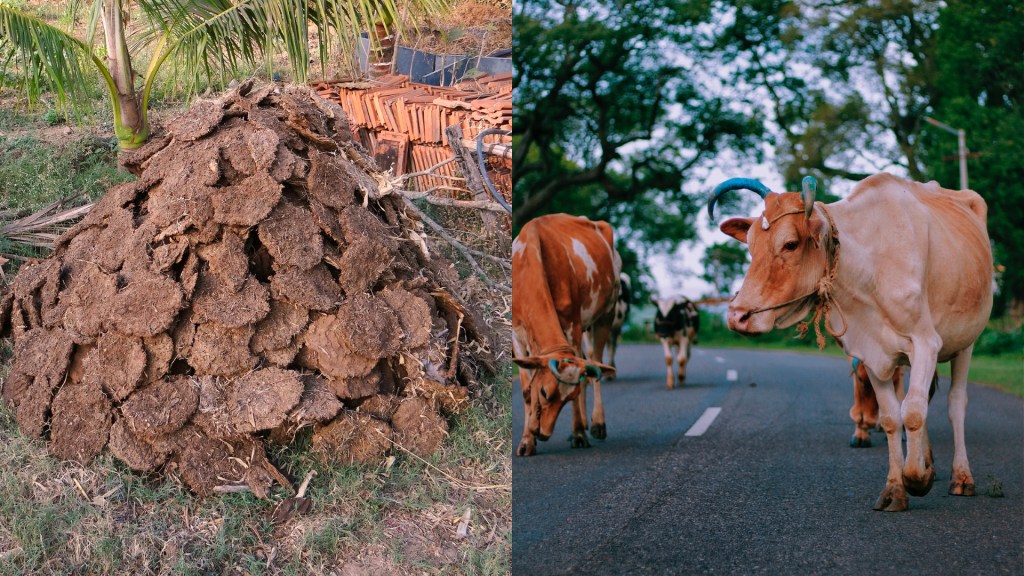India is gearing up to conduct a “cow science” exam, even as multiple portions of the exam’s syllabus are not scientifically proven.
On Jan. 6, Rashtriya Kamdhenu Aayog (RKA), a government body established in 2012 to protect cows, released a 54-page syllabus on its website for the exam to be held on Feb. 25.
Videos by VICE
Consisting of 100 multiple choice questions, the online exam will be available in 12 regional languages, including Hindi and English, and will be conducted across four categories by level of education. While officials in India’s Ministry of Animal Husbandry have said the exam is an attempt to “infuse curiosity” about the bovine, critics see the exam as an attempt to politicise the animal considered sacred by Hindu nationalists
The syllabus became controversial for including unscientific statements like Indian cows’ (known as desi cows) milk contained gold, Jersey cows (a foreign breed) were “prone to diseases” as they were “lazy” and slaughtering a cow caused earthquakes. It also claimed that in 1984, when the Indian city of Bhopal was struck by a gas-leak tragedy that killed more than 20,000 people, those who had coated their homes with cow dung were not affected.
The content of the syllabus drew flak from politicians and social media users who believed that the cow exam was an attempt by right-wing Hindu nationalists to politicize the animal considered sacred in Hindu scriptures.
In the face of public pressure, the government commission took down many controversial claims. However, it has now released three new chapters of reference material on their official website that continue to peddle pseudoscientific or mythical theories. Here are some portions from the syllabus for the cow exam:
“They have some unique features like hump on their back that has the special power to absorb the sun’s energy with the help of the ‘solar pulse’ situated on their humps running through the spine, a unique colour and a curved backline.”
“The Suryaketu Nadi, located in the cow’s back absorbs many positive and medicinal energy from the sunlight and the atmosphere, leading to more nourishing milk, cow dung, and urine.”
“Cow Dung is the most expensive thing that Cows has given us. Gobar is basionyms of two words; Gau (Desi Cow) and var (the best).”
“Cow dung is superior to other dung because it is antiseptic and has prophylactic (disease preventive) properties.”
“No other animal or human beings urine has so many ingredients as our Desi Cows. Upon boiling the Gaumutra (cow urine), we get thick slurry that is full of minerals, vitamins and used for various ailments.”
The bovine has emerged as a contentious topic in India, especially after the Hindu nationalist Bharatiya Janata Party came to power in 2014. Nineteen states have banned the slaughter, transportation or export of cows, while mob violence and lynchings after suspicions of cow slaughter have been on the rise. A 2019 report by the Human Rights Watch found that cow vigilantes have killed at least 44 people since 2016, the majority of them Muslims.
According to an official statement from the Ministry, “Blogs, videos, and other selected reading material will be uploaded on the official website. Scientists, entrepreneurs, gau sevaks (cow volunteers), farmers, youth, women as well as senior citizens will actively work to make this mega event a grand success.”





